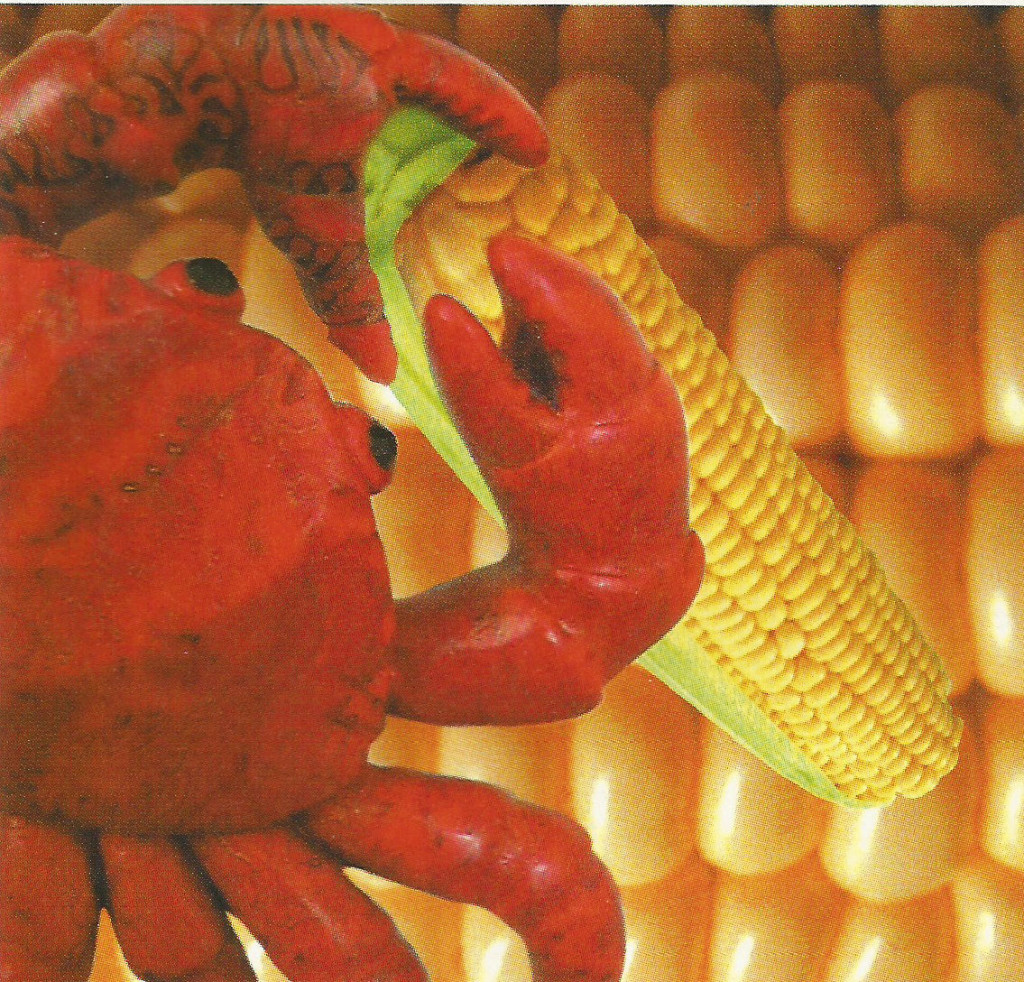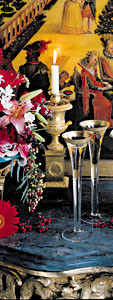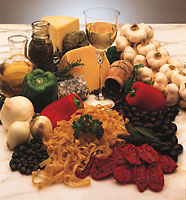Shaping Up For Summer
May 2001
Pages 42-43
The key to success is a positive attitude and healthy food!
I love going to the gym. I really do. I’m not a body-builder, far from it. I enjoy working up a little sweat and feeling like I’m doing something constructive with my body, but I’m not in it for pain and gain. I like the people watching.
Everyone is getting ready for summer. 24-7-365, they’re getting ready for summer. Doesn’t matter if it’s January 2nd and they’re working off that New Year’s resolution, or it’s Labor Day and they want to look good for the last weekend tea dance.
Mostly, I love the routines that people have worked up for themselves. I’m not talking about the hardcore body-builders, though even some of them have fascinating workouts. I’m talking about the average guy or gal like you and me.
I have a friend who goes to the gym every day – to read the New York Times online. He sits on one of these new high-tech exer-cycles with an Internet hookup and pedals his way through. He manages to get in an hour and a half of bicycling a day. He covers a simulated five miles. He doesn’t pedal too fast, because he wouldn’t be able to read the screen.
Recently, I listened in as two guys talked about doing crunches. One was so proud of his abs, which indeed were rippling away. He told the other how he was managing to make it through a hundred crunches each day. The other, whose abs were somewhere lost beneath a layer of too many doughnuts, decried his genetics. “I do between 500 and 1000 crunches, and look – nothing!
His friend exclaimed in disbelief, so he set out to demonstrate. Somewhere around 50, the youngster with the six-pack murmured that perhaps the crunches would work better if his shoulders actually came up off the mat.
The diets people talk about at the gym are also amusing. I have listened in on tales of Pritikin, Atkins, mastering zones, grapefruit, Fitonics, Suzanne Somers, 5-day Miracles, Beverley Hills, low-fat, high-fat, low-carb, high-carb, low protein, high protein, and cabbage soup. I’ve heard tales of weight loss that range from a pound a month to five pounds a day. Of course, none of them came from people who you’d want modeling in the latest swimsuit issue.
I recently returned from a vacation where I stayed at a clothing optional resort. During the first couple of hours, I couldn’t help myself. Guys who, in my mind at least, shouldn’t have taken their clothes off alone in a dark room were wandering around in the buff. Meanwhile, other men who should have been bronzed and placed on a pedestal were under wraps.
Before long I realized that there was a mix of body types in all categories. As I spent my vacation chatting with and getting to know a good number of these men, I discovered that it really didn’t have a whole lot to do with what they looked like. Some guys are comfortable with little or no clothing, regardless of what their body looks like, others aren’t.
Some of the men who clearly spent hours daily at the gym were obsessed with every perceived flaw that someone might notice. Others were perfectly content to lay it all out in the sun. Men who probably spent gym period in the cafeteria were as likely to heave themselves glistening onto the pool deck or drape their torsos in a caftan.
So here’s the long and short of it. I think it’s all about attitude. You have to be relaxed and happy with who you are. When you’re tense and obsessed, everyone around you knows it. Now, perhaps that means long hours of therapy, deep meditation, spiritual retreats, sensory-deprivation tank time, or a facial at Elizabeth Arden. If, however, you’ve paid any attention to my columns over the past many years, you know that I’m about to recommend food. And why not? If the way to a man’s heart is through his stomach, that should include your own heart. If friendship is promoted by good food and good drink, shouldn’t that start with making friends with yourself? We should put things in our bodies that make us feel good all over. And I don’t mean a tab of ecstasy washed down with mineral water.
As for me, the ultimate “get ready to go out and face my adoring public” meal would probably be a big bowl of hot fudge sauce and something, oh, maybe just my finger, to dip in it. How could you not go out and have a fabulous night after that? But running an awfully close second is a bowl of homemade soup and fresh bread. There’s nothing better for aligning my stars, synching my biorhythms, and just plain gearing up for a night out or a day at the pool.
Here is one of my favorite springtime soups. It is extraordinarily simple to make. It is served cool, not chilled. It is filling, nourishing, and completely sensual in texture.
Cantaloupe-Yukon Gold Soup
1 ripe cantaloupe
1 pound Yukon gold potatoes, peeled
1-2 dried chipotle peppers
1 cup plain yogurt
salt to taste
Unless you’re opening a can, it doesn’t get much easier than this. Boil the potatoes and the chipotle peppers in water until the potatoes are tender. Drain and reserve a little of the cooking liquid. Cut the cantaloupe open, remove the seeds and scoop the melon flesh into a food processor. Puree and then add the potatoes, peppers and yogurt. Process until smooth, if you need to thin it out a little, add some of the reserved cooking liquid. Add salt to taste.
Cool in the refrigerator until it’s a refreshing temperature – a bit colder than an air-conditioned room is just right. You could sprinkle some of your favorite chopped herbs on it – if you can get epazote, a delicious Mexican culinary herb, use that. Serve with flatbread, I like the kind with all sorts of seeds on it…
A note on the bread – if you’re not going to make it yourself, at least go to a bakery and get freshly baked bread. Plastic wrapped slices of preserved, baked flour just don’t cut it in my book. Remember, we want to enjoy the meal!
Q San Francisco magazine premiered in late 1995 as a ultra-slick, ultra-hip gay lifestyle magazine targeted primarily for the San Francisco community. It was launched by my friends Don Tuthill and Robert Adams, respectively the publisher and editor-in-chief, who had owned and run Genre magazine for several years prior. They asked me to come along as the food and wine geek, umm, editor, for this venture as well. In order to devote their time to Passport magazine, their newest venture, they ceased publication of QSF in early 2003.


